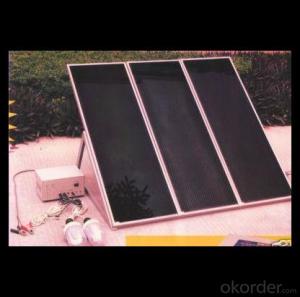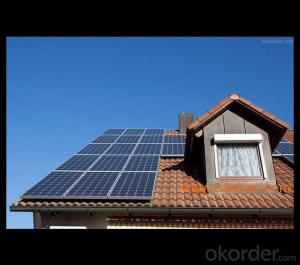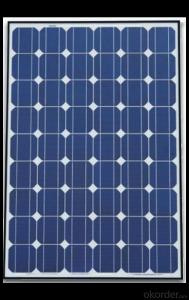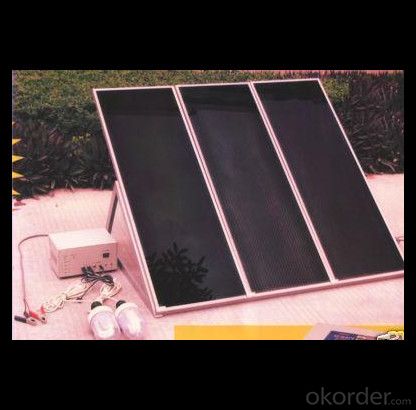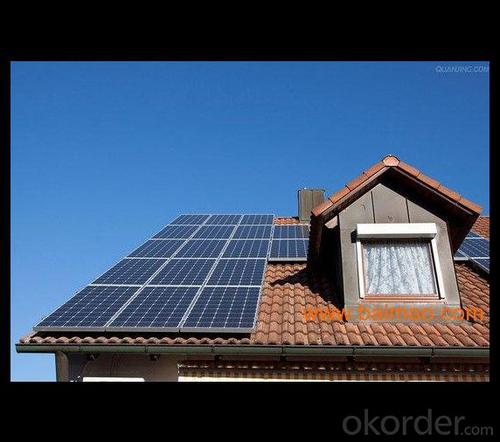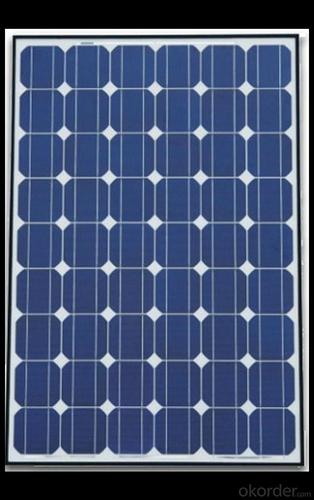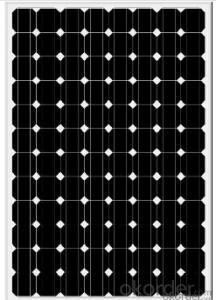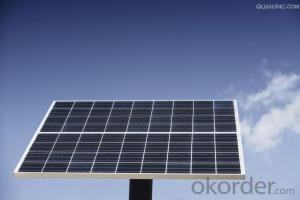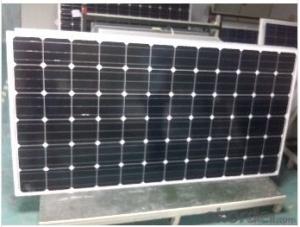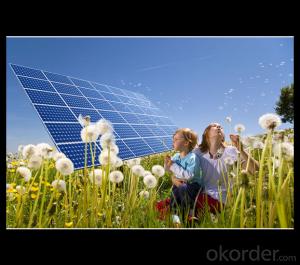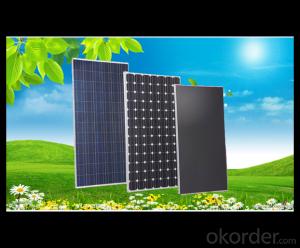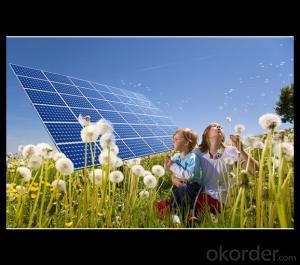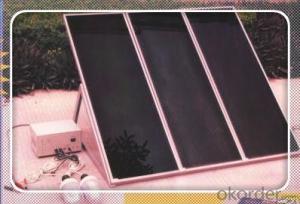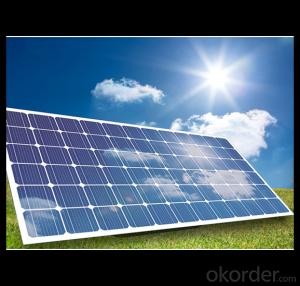Solar Panels Jacksonville - 255w Direct Factory Sale Price 240-260watt Solar Panels
- Loading Port:
- China main port
- Payment Terms:
- TT OR LC
- Min Order Qty:
- 10000 watt
- Supply Capability:
- 100000 watt/month
OKorder Service Pledge
OKorder Financial Service
You Might Also Like
Specification
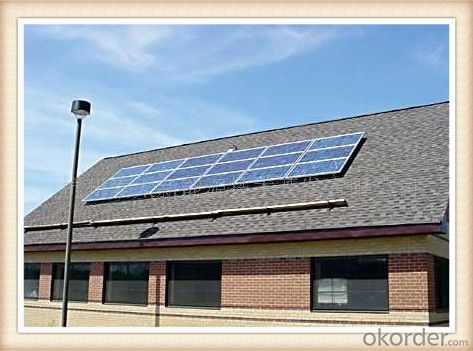
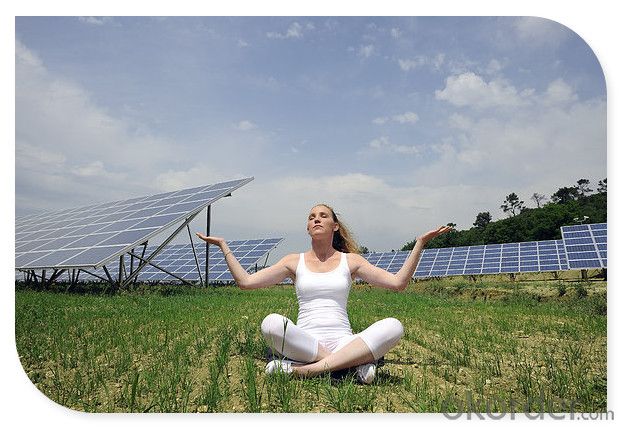
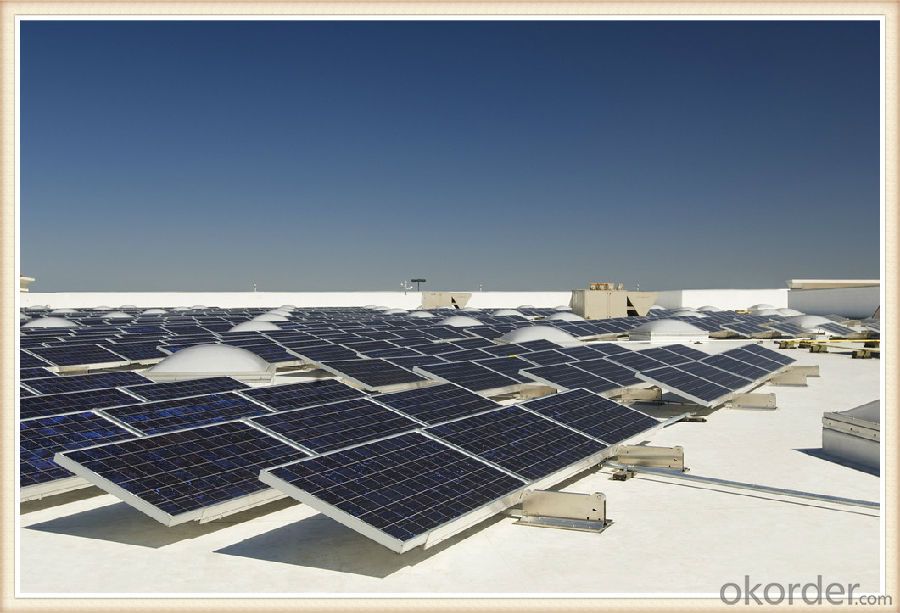
Solar Module Introduction
Solar modules use light energy (photons) from the sun to generate electricity through the photovoltaic effect. The majority of modules use wafer-based crystalline silicon cells or thin-film cells based on cadmium telluride or silicon. The structural (load carrying) member of a module can either be the top layer or the back layer. Cells must also be protected from mechanical damage and moisture. Most solar modules are rigid, but semi-flexible ones are available, based on thin-film cells. These early solar modules were first used in space in 1958.
Electrical connections are made in series to achieve a desired output voltage and/or in parallel to provide a desired current capability. The conducting wires that take the current off the modules may contain silver, copper or other non-magnetic conductive transition metals. The cells must be connected electrically to one another and to the rest of the system. Externally, popular terrestrial usage photovoltaic modules use MC3 (older) or MC4 connectors to facilitate easy weatherproof connections to the rest of the system.
Specification
Model Type | |
Peak Power-Pmax(W) | 5-200W |
Open Circuit Voltage-Voc(V) | 44.2 |
Maximum Power Voltage-Vmp(V) | 36 |
Short Circuit Current-Isc(A) | 5.4 |
Maximum Power Current-Imp(A) | 5 |
Maximum System Voltage | 1000V DC |
Maximum Series Fuse Rating | 10A |
Power Tolerance | -1~+3% |
Temperature Coefficients of Pmax | -0.45%/℃ |
Temperature Coefficients of Voc | -0.348%/℃ |
Temperature Coefficients of Isc | 0.031%/℃ |
Nominal Operating Cell Temperature | 44.5±2℃ |
Standard Testing Condition(STC) | Irradiance:1000W/m²;Temperature:25℃;AM=1.5 |
Qualification Test Parameters | |
Operating Temperature | -40℃~+85℃ |
Storage Temperature | -40℃~+85℃ |
Pressure Bearing | ≥5400Pascal/m² |
Wind Bearing | ≥5400Pascal/m² |
Mechanical Characteristics | |
Cell Size | Mono 125*125mm±0.5 |
No.of Cells | 72pcs(6*12) |
Dimension | 1580*808*40mm |
Weight | 15.5Kg |
Glass | 3.2mm High Transmission,Low Iron |
Frame | Anodized Aluminum Alloy |
Junction Box | IP65Rated |
Internal Diodes | 3 Bypass Diodes |
Cable | 1*4.0mm² Length 900mm |
Images
Packing & Shipping:
We have rich experience on how to pack the panels to make sure the safety on shipment when it arrives at the destination.
The normal size is packed by 25pcs/ carton / pallet. Paper carton for FCL shipping and wood carton for LCL shipping.
Features
1.High reliability with guaranteed -3% to +5% power output tolerance, ensuring return on investment
2.High conversion efficiency based on leading innovative photovoltaic technologies
3.Withstands high wind-pressure and snow load, and extreme temperature variations
4.Attractive appearanceUnique frame design, high mechanical strength, and easy Installation
Warranty:
For c-Si panel: 25years output warranty for no less than 80% of performance, 10 years output warranty for no less than 90% of performance. Free from material and workmanship defects within 5 years.
For a-Si panel: 20 years output warranty for no less than 80% of performance, 10 years output warranty for no less than 90% of performance. Free from material and workmanship defects within 2 years.
•100% product quality protection
•100% on-time shipment protection
•100% payment protection for your covered amount
FAQ:
(1)What price for each watt?
It depends on the quantity, delivery date and payment terms.
(2)What is your size for each module? Can you tell me the Parameter of your module?
We have different series of panels in different output, both c-Si and a-Si. Please take the specification sheet for your reference.
(3)Can you provide the peripheral products of the solar panels, such as the battery, controller, and inverter? If so, can you tell me how do they match each other?
Actually we are only manufacturer of solar panels, but we could try to source them for you in China if you need. We could provide you an optimal system design to instruct you how to install.
(4)Do you have the CE, TUV, UL Certification?
We’ve already passed all the tests, and any certificate is available.
(5)Have you ever sold your products to companies in my country?
Of course, we have customers in all general PV markets, but I think we should expand our market share along with the market growth.
(6)When did your company set up? You are a new company, how can I believe your quality?
We entered into Solar PV industry in 2005, now we have several plants in manufacturing of a-Si and c-Si panels, and our capacity is 220MW per year. Till now we have already passed all the tests by authorized laboratories, e.g. TUV, VDE, UL.
(7)Can you help us install the module if we cooperate with you?
We haven’t entered into installation sector, but we have the plan in near future.
(8) How do you pack your products?
We have rich experience on how to pack the panels to make sure the safety on shipment when it arrives at the destination.
(9) Can you do OEM for us?
Yes, we can.
(10)Can we visit your factory?
Surely, I will arrange the trip basing on your business schedule.
- Q: Can solar panels be installed on a factory or manufacturing plant?
- Yes, solar panels can be installed on a factory or manufacturing plant. In fact, many industrial facilities are increasingly adopting solar energy to meet their power needs and reduce their carbon footprint. The large roof areas and open spaces available in factories make them ideal locations for solar panel installations, enabling businesses to generate clean and renewable energy on-site while saving on electricity costs.
- Q: What are solar panels?
- Quick definition: A device (often consisting of a group of glass panels) that collects solar energy and converts it into electricity or heat. Long definition (and more info): See the link below.
- Q: What size of system would I need to get if I use on average 500 kilowatt hrs a month I would like to do a tie in grid system I live in the states south central area of States any info or links to sites would be wonderful I am interested in this type of energy soure thank you
- I think if you have the land have a solar array on your land. Putting on the house could cause it to collapse! 400 kilowatts per week is a huge usage. Turn some stuff off and don't leave the entertainment stuff on standby. Fill empty spaces in your freezers with blocks of polystyrene and be sensible with usage.
- Q: Is there a free site or resource that will teach you how to do this? Hopefully step by step and tells you how to buy all the parts ect?Which is the best resource for sale earth4energy, homemadeenergy, ect? Do they actually work and also as well as those which are professionally done?They say it will cost under $200 for a panel, but how much will this panel actually produce I mean how many panels would you have to make to produce 00% of your homes energy?
- Earth4Energy okorder /
- Q: I am trying to built a circuit that will power two USB ports (both 5V and 0.5 amps) from the output of a solar panel that produces 20V at 0.2 amps. I have a voltage regulator that runs at 5v and 0.5 amps but I can't figure out the best way to boost the current up to 0.5 amps before I incorporate the voltage regulators.
- If you want to power both USB ports at the same times, It might not be possibble. Your solar panel only supplies 2.24 Watts (20V * 0.2A) of power and you need to deliver 2.5 Watts (5V * 0.5A) to the ports. Subtracting any losses from your regulator(s), you will be WAY over your power budget. You will need more of a solar panel or less of a load.
- Q: I am doing a science fair project on solar panels, and I need four solar panels to conduct the experiment. I would only need the solar panels for a week. What type of solar panel should I get?
- If okorder / for some ideas.
- Q: i really love the idea of solar and want to start out small, so i'm new to this.I plan on getting an 85w panel to charge my laptop. what other equipment is needed to accomplish this?would i need to get a battery or does the solar panel hook directly to the laptop. Does one end just lead to a conventional outlet similar to a wall outlet?could someone please give me a detailed explanation with options about this? i would greatly appreciate it.
- humm..... .need HUGE solar panel (alot) 2. wires 3. aligato clips . put the panels on the roof 2. use the aligator clip to clip the wire from the panel to the bars of the pluger of the comp. charger 3.tada mark me best:)
- Q: Can solar panels be used to power a drone?
- Yes, solar panels can be used to power a drone. By harnessing sunlight, the solar panels can convert the energy into electrical power that can be used to charge the drone's batteries or directly power its motors. This enables drones to have longer flight times and potentially operate in remote areas without the need for frequent battery replacements. However, the practicality and effectiveness of solar-powered drones may depend on factors such as the size and efficiency of the solar panels, weather conditions, and the power requirements of the drone.
- Q: Our school is in the process of being built, but they have no plans to include any environmental benefits. I was wondering how to get a grant for solar panels (at least) or who I can talk to in order to get a grant.
- I do not want to argue over the pay back period for solar panels but from the information I have been gathering, payback could be from 5-5 years, not 40. I guess it depends on the amount of sun that each panel will recieve, so maybe both could be partially correct. Another item to be aware of is that while the cost of your panels and the electricity generated by them will remain stable or decrease significantly for 25 years, the cost of your other energy sources will generally be increasing , perhaps very significantly. Since your school is being built now, it will need a roof. There are photovoltaic shingles for this. Look into it yourself. Do a google search for google green and see what they are doing already. Present this information to your PTA and any other organization who might have influence. This is really a time for your generation to step up and stop listening to nay sayers. Think for yourself, study, research it and broadcast everything you learn to others.
- Q: I live in a higher LATITUDE so in the winter months, there is a limitation in the amount of sunlight available, but will this impediment restrict the ability of solar panels to function due to the lack of sunlight involved?
- Solar panels generate power only during sunshine hours. But they only need sunshine, they don't like the heat, that comes along with the sunshine. So its a trade off, the places that have a lot of sun, also have a lot of heat, and places that do not have a lot of sun are not that hot. But you do need sunlight to run solar panels. There's a lot of tools available which can tell you how much power you are able to generate given your location.
Send your message to us
Solar Panels Jacksonville - 255w Direct Factory Sale Price 240-260watt Solar Panels
- Loading Port:
- China main port
- Payment Terms:
- TT OR LC
- Min Order Qty:
- 10000 watt
- Supply Capability:
- 100000 watt/month
OKorder Service Pledge
OKorder Financial Service
Similar products
Hot products
Hot Searches
Related keywords
